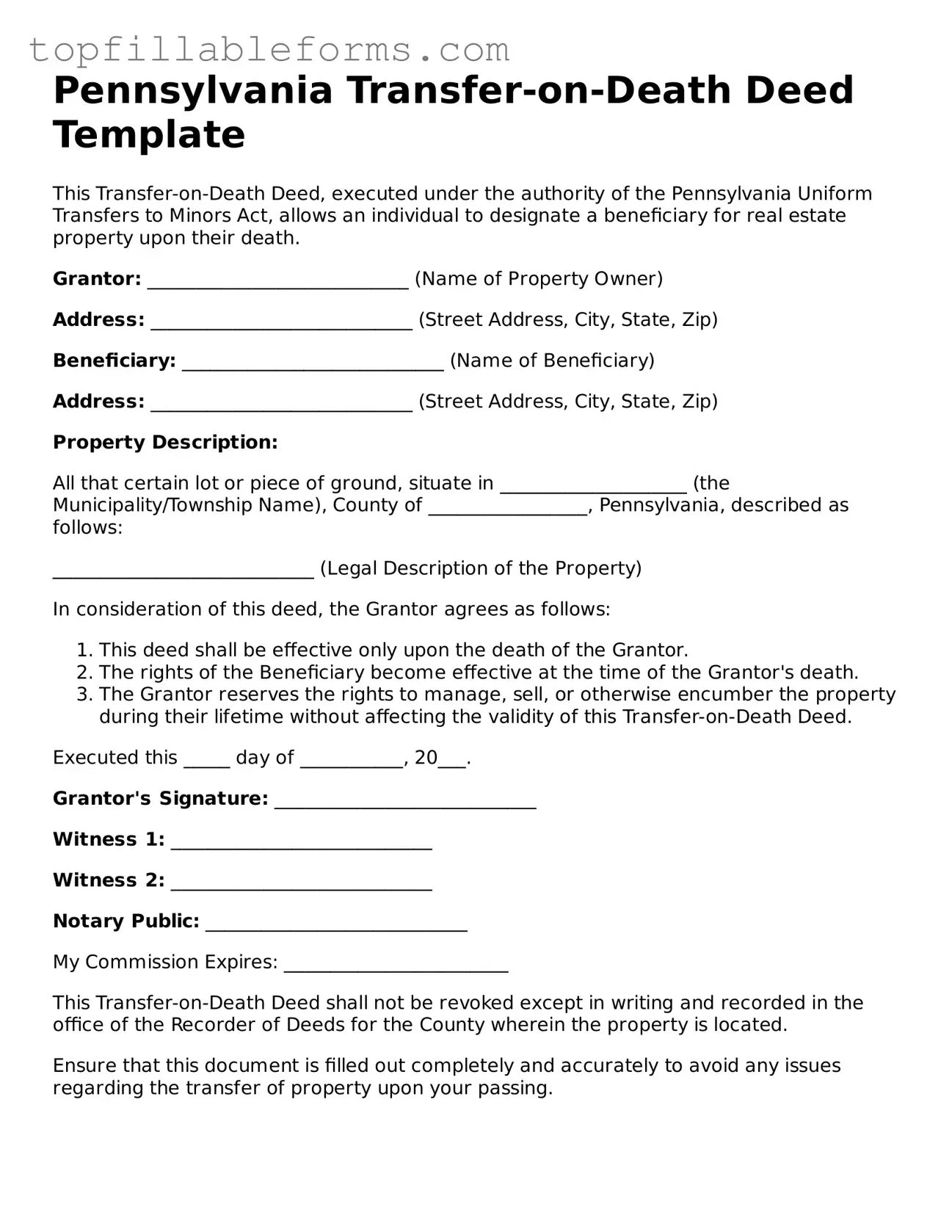Pennsylvania Transfer-on-Death Deed Template
This Transfer-on-Death Deed, executed under the authority of the Pennsylvania Uniform Transfers to Minors Act, allows an individual to designate a beneficiary for real estate property upon their death.
Grantor: ____________________________ (Name of Property Owner)
Address: ____________________________ (Street Address, City, State, Zip)
Beneficiary: ____________________________ (Name of Beneficiary)
Address: ____________________________ (Street Address, City, State, Zip)
Property Description:
All that certain lot or piece of ground, situate in ____________________ (the Municipality/Township Name), County of _________________, Pennsylvania, described as follows:
____________________________ (Legal Description of the Property)
In consideration of this deed, the Grantor agrees as follows:
- This deed shall be effective only upon the death of the Grantor.
- The rights of the Beneficiary become effective at the time of the Grantor's death.
- The Grantor reserves the rights to manage, sell, or otherwise encumber the property during their lifetime without affecting the validity of this Transfer-on-Death Deed.
Executed this _____ day of ___________, 20___.
Grantor's Signature: ____________________________
Witness 1: ____________________________
Witness 2: ____________________________
Notary Public: ____________________________
My Commission Expires: ________________________
This Transfer-on-Death Deed shall not be revoked except in writing and recorded in the office of the Recorder of Deeds for the County wherein the property is located.
Ensure that this document is filled out completely and accurately to avoid any issues regarding the transfer of property upon your passing.
